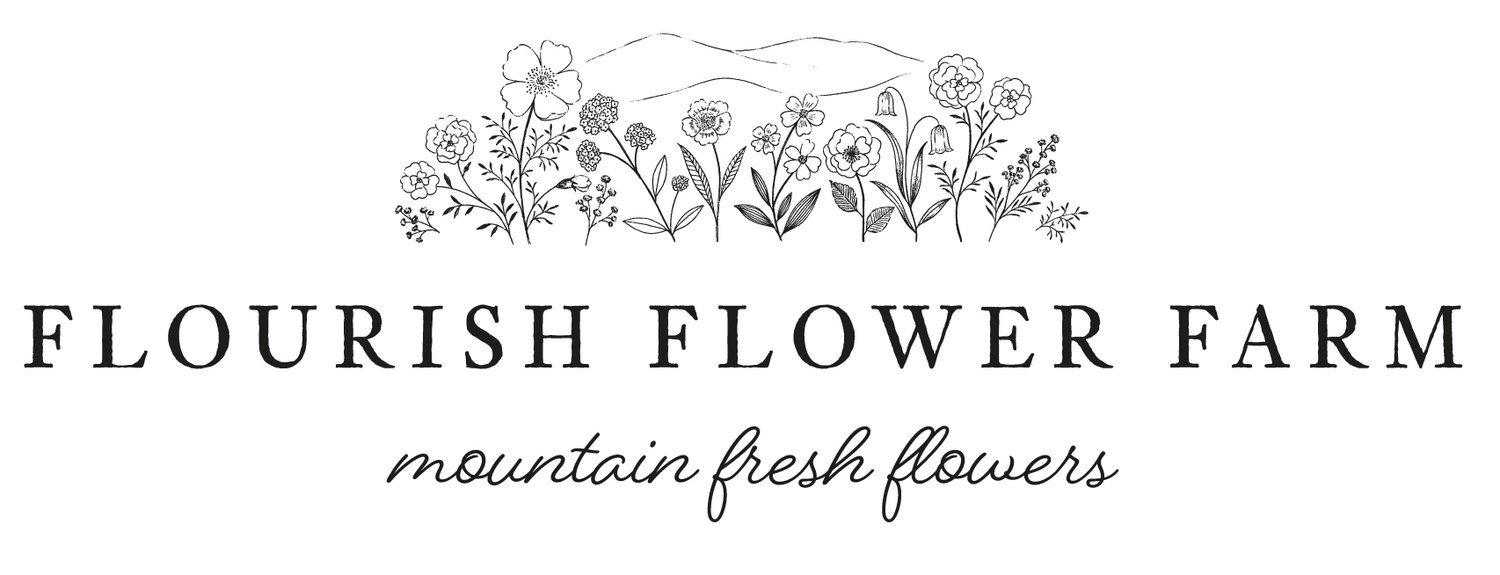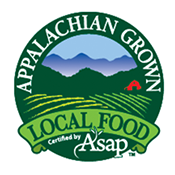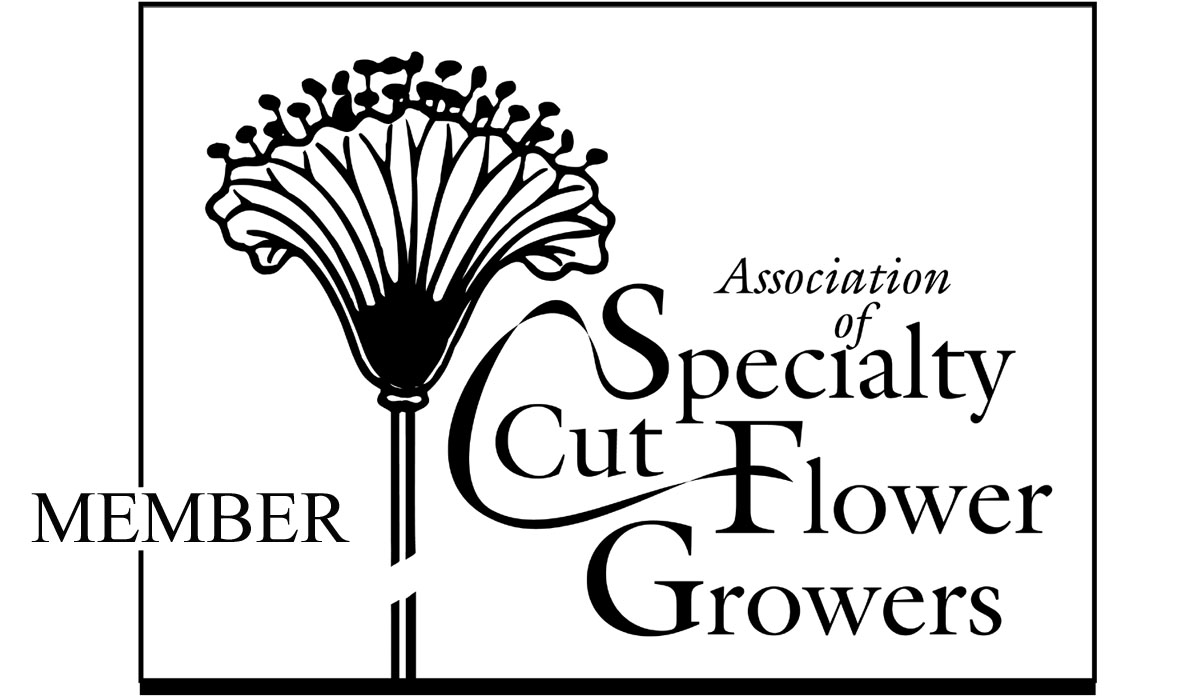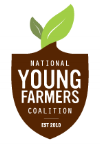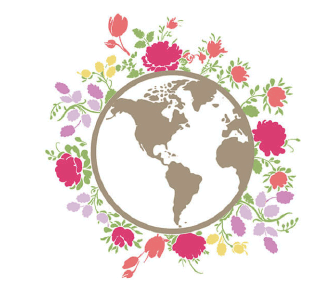Pantone Project with Carley of 'Long Live Simple'
/Most of you know how important collaboration is to me personally and to what we do at Flourish. Whether its collaborating with photographers for styled shoots or a calligrapher to create special details at our workshops, I love working with other local artists and creatives! So I was so excited to have the opportunity recently to interview local Asheville graphic designer Carley Lee, owner of Long Live Simple.
Carley reached out to me via Instagram last year, and asked if she could come to the farm in search of flowers to use in a photography color project of hers. I was immediately intrigued by her project to see what she was working on, but also because color is such an important aspect of floral design. I loved meeting Carley and seeing what she did with the flowers, and I wanted to share it with you. I think you’ll find Carley’s magical work very appealing and inspiring! And at the end she gives some tips on how you, too, can create something like her Pantone Project.
The Interview
Me/Niki Irving: Will you tell us a bit about your work, and what the Pantone Project is?
Carley Lee: I’m the Creative Director and owner of Long Live Simple, where we offer meaningful, custom design work for customer-driven and thoughtful brands. Most of our clients are entrepreneurs and creatives – I think you and I have some overlap, in fact, with our customers and audiences.
NI: I think we do! Many of my followers are farmers and gardeners - and many others are entrepreneurs and creative types with an appreciation for beauty.
CL: Exactly! Like me! I follow you on Instagram because I find such inspiration and beauty in your imagery. As a creative, I’m always looking for and nurturing my connection to things that feed my creativity – both online and in the “real” world. And when I visited your farm for the Pantone Project, I was struck by your beautiful process and your hoophouses.
NI: Thank you! I’m so glad. I think it can be easy to try to overperform and overperfect social media presences, and so I keep the flowers as the central focus. I think, in some ways, farming and design are the ultimate exercises in non-attachment. You can have great plans, but things are going to be different than planned.
CL: It’s so true! I think it encourages flexibility and valuing our connections to creativity. Nature is a source of inspiration for me, and it’s how the Pantone Project got started. Pantone is the gold standard of print and digital color manufacturers, and I spend a lot of time in the Pantone world of colors. Each color has a number and a name, and it’s how designers and printers make sure their colors match. It’s our language.
Designers all over the world use Pantone colors, and somebody somewhere first did a #pantonepost on Instagram – a post in which they take a photo of something natural or man-made along with the Pantone color swatch that it matches.
When looking for inspiration for clients’ color palettes, I like to look outside at naturally occurring colors. Back in 2016 during peak leaf season, I took my dog Kota on a walk around our neighborhood and I was mesmerized by the range and depth of colors around me. So I grabbed a bag, collected leaves, and went back to my studio where I matched the each leaf to a Pantone color. I snapped a picture of the leaves, and posted it on Instagram.
That’s how my #longlivepantone project was born, and since then I’ve used it as a way to collaborate with other local businesses, like you!
NI: What other items have you used?
CL: In addition to Flourish Flower Farm, I’ve done collaborations with Poppy Handcrafted Popcorn, Vortex Doughnuts, and Fifth Season Gardening Co. in Asheville. I have plans to do more collaborations this summer, but I’ll keep those a surprise.
I’ve also done treats from the farmers’ market, seasonal decorations, potted plants, herbs from my own garden – whatever catches my eye. Sometimes it’s more challenging than other times. Shape and size are a factor. The shell flat-lay I did, for example, last summer was tricky. Firstly, getting the shells to lay right was a production. Also, was very windy that day, so my sister and I were dashing around trying to hold things down and block the wind.
NI: What’s been your favorite post in the series so far?
CL: That’s hard to say. I love them all, really, for two reasons. One is that this project has changed the way I think about color. I feel like I see it more deeply than before, because I have such a direct experience with it. The other is the feedback I get from others about them. People say they’ve found them to be captivating, and have helped them to pause – and sometimes even pay attention to nature in a different way. So I especially love the first one, of course, because it’s the one that started it all for me. I’m also very partial to the ranunculus post, because of the range of colors within one flower.
Another of my favorites is the daffodil. I’m starting to play around with natural backgrounds instead of in-studio flat-lays, and that’s a fun added layer.
NI: Do you have any recommendations about how to do a project like the Pantone, or ones that "regular folks" can try out?
CL: Sure. It doesn’t have to be complicated. My set-up is very simple. My studio is an area of my home-office that is full of natural light. I just use it to its best advantage. I have an inexpensive light diffuser that screens and spreads the light, and a piece of white foam board to reflect it. In terms of camera, I just use my iPhone 8.
If you don’t have access to the Pantone color postcards, but want to do something similar, you can go to a hardware store and help yourself to their printed paint swatches. You might find, like I did, that nature makes more colors than color companies do, and that you can’t find a match for some colors you come across. To me, that’s the beauty of this kind of project. It’s accessible in its process, and it also helps us see our world more deeply.
I'm grateful to Carley for sharing insight into her creative process and the Pantone Project. Its so fun and inspiring to discover yet another beautiful way to create beauty with our flowers! If you'd like to learn more, you can follow Carley's work @longlivesimple on Instagram and at Long Live Simple.
I'm hoping to share more interviews with local Asheville folks (or non-local) so please share if there is someone or something you'd like to learn more about. xo Niki
